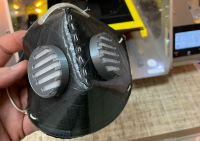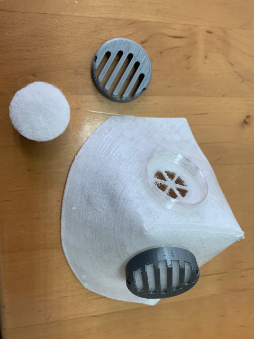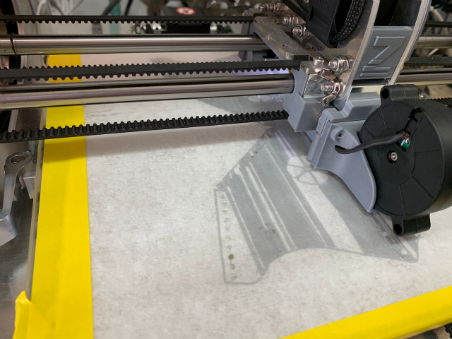#WUTprinting Face masks from BioMedical Engineering Laboratory, or DIY
The BioMedical Engineering Laboratory (BioMedLab) of the Warsaw University of Technology Faculty of Chemistry and Process Engineering has always been home to projects supporting healthcare professionals and patients. Artificial blood, artificial blood vessels or innovations driving cancer treatment are just some of the ideas of the team headed up by Prof. Tomasz Ciach. Now, the scientists are helping healthcare in another way: by printing reusable face masks and joining in an inter-faculty initiative to produce face shields.
It all started with face masks. The two 3D printers available at the BioMedical Engineering Laboratory were put to use. The team utilized, modified to own needs and tested a design created by iczfirz, a Thingiverse user. Then, the team openly published free-to-use files and guidelines for use, sharing and modification as needed.
The scientists of the BioMedical Engineering Laboratory point out that face masks of their design can be a good alternative for those who need surgical or at-home masks amid the big problem of shortage and scarce availability. But for frontline medical staff and doctors working in the infectious settings these should be the last option.
How to make a mask?
This mask is universal, reusable and designed to be used with removable filters that you can easily make yourself.
To print a mask, you need an FDM 3D printer, i.e. the most commonly available printer type. The print head must be capable of heating up to a minimum temperature of 230 to 235℃. Flexibility is key to the mask design enabling snug fit to the face and easy forming into a three-dimensional shape by sewing up the flat printout along the nose line.
A flexible polymer such as TPU (thermoplastic polyurethane) or FLEX is needed to print the main part. Other parts (ventilation port covers and accessories) can be printed of the more commonly available PLA or ABS.
The mask design allows filters of any type cut into discs with a diameter of 34–35 mm to be fitted in the ports. A variety of filter fibers can be used as needed to cut out filters.
Air filters must be changed. This is very important as they absorb moisture from the exhaled air, which may contain viruses. Moreover, this makes an ideal environment for bacteria and fungi growth. Our scientists recommend changing filters after 10 hours of continuous use or more frequently if extensively worn. Used filters must be destroyed and treated as potentially coronavirus-infected material.
Textile fabric for mask-wearing comfort is also needed in the printing process. Any thin fabric that can be laid flat on a 3D printer workbench will be suitable.
The BioMedical Engineering Laboratory team has added a modification to the design to ensure production scalability.
Time for face shields
Having made protective mask templates openly available, our scientists decided to join the WUT’s inter-faculty face shield printing initiative. Thus, they reset their equipment and launched new production.












